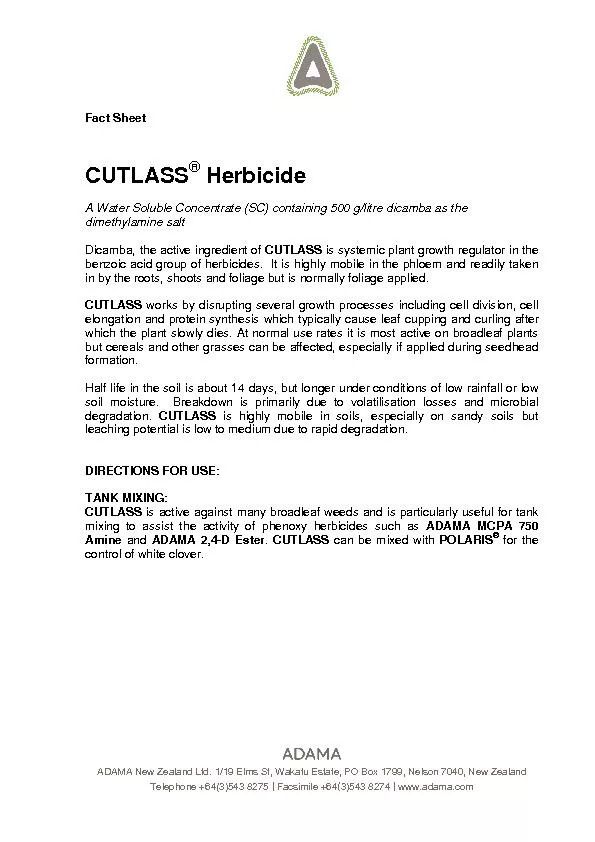PDF-1/19 Elms St, Wakatu Estate, PO Box 1799, Nelson 7040, New Zealand ...
Author : min-jolicoeur | Published Date : 2016-03-10
ADAMA New Zealand Ltd Telephone 643543 8275 Facsimile 64 3543 8274 wwwadamacom Fact Sheet CUTLASS
Presentation Embed Code
Download Presentation
Download Presentation The PPT/PDF document "1/19 Elms St, Wakatu Estate, PO Box 1799..." is the property of its rightful owner. Permission is granted to download and print the materials on this website for personal, non-commercial use only, and to display it on your personal computer provided you do not modify the materials and that you retain all copyright notices contained in the materials. By downloading content from our website, you accept the terms of this agreement.
1/19 Elms St, Wakatu Estate, PO Box 1799, Nelson 7040, New Zealand ...: Transcript
Download Rules Of Document
"1/19 Elms St, Wakatu Estate, PO Box 1799, Nelson 7040, New Zealand
..."The content belongs to its owner. You may download and print it for personal use, without modification, and keep all copyright notices. By downloading, you agree to these terms.
Related Documents














